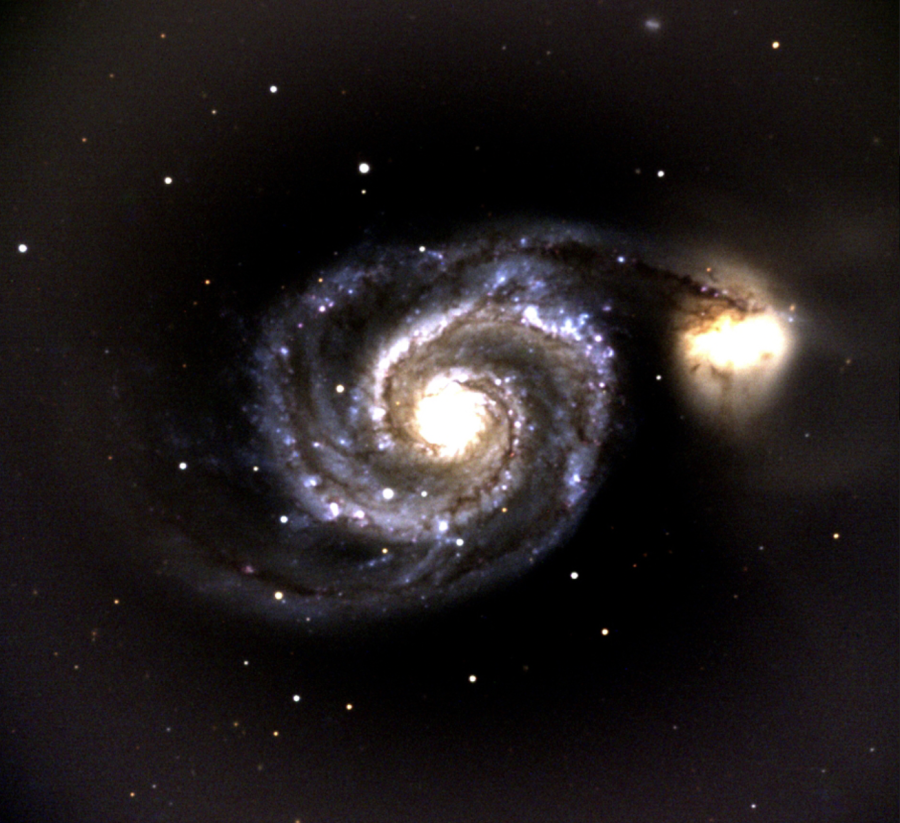Stories from Astronomy
March 10, 2022
Each year at Priory, I usually teach a new batch of 7th or 8th graders. These students are often surprised when I tell them I didn’t study math in college. Well I did do lots of math, I just wasn’t a math major; instead, I majored in Astronomy, or as I sometimes call it: Physics in Space. In astronomical discussions with students, parents, friends, and strangers, I am usually asked: why astronomy? I want to share the answer to this question, as well as share some experiences (and photos) I’ve had over the years as an astronomer.
Why astronomy? I have Gene Roddenberry and George Lucas to thank. It all stems back to watching Star Trek and Star Wars as a kid with my dad. The earliest memory I have of space is watching Star Trek IV: The Voyage Home off of a VCR tape recorded from TV, complete with the commercials included. In that movie, the crew slingshots around the sun to travel back in time to 1980’s San Francisco. Unfortunately, the sun’s gravitational well won’t send you backwards in time, but if you wait about 365 days, it will send you exactly one year forwards in time. The movie had a great close-up image of the sun complete with sunspots and flares bursting off its surface. Recently, the Astronomy club took a photo of the sun [note to editor: insert photo], but right now the sun is in a low-activity state, so there were only a few sunspots, and no flares visible. The magnetic field of the sun creates the sunspots, flares, and other surface features of the sun. Over an eleven year cycle, the magnetic field gets more tangled, and hence more sunspots and flares happen. Then, the field snaps and the sun’s north and south pole switch places, and the cycle starts again. Right now, we’re near the beginning of the cycle, so we’re in a calm phase for the sun. But, for the current 7th graders, when you’re a senior, we should see lots more on the sun.
After watching and reading lots of science fiction as a kid, I went to college and started studying astronomy. While an undergraduate, I had the opportunity to do a summer internship and do a lot of observing using a 24 inch telescope at the West Mountain Observatory in Utah. The observatory was only reachable by 4 wheel drive vehicles, so I had to leave my car (alas not a Prius) at the bottom of the mountain, and take an ATV up the mountain. At the top there was a house and two telescope domes. But, the first afternoon we went up that summer, we had a more important duty: spider killing. The house and observatories were covered with spiders about as big as a 7th grader’s hand. And I do mean covered: doorways, eaves, windows, pathways. We kept brooms in the ATVs so that we could brush them off the doors so we could get inside the house. We should have kept flamethrowers in the ATVs. Over that summer, I took data that eventually led to my undergraduate thesis, studying variable stars in an open cluster called NGC 188 (yes, I know it’s a boring name, but space is too big to give an exciting name to every object out there). NGC 188 is not terribly exciting, but it is older than our own solar system at about 6.5 billion years old. So instead, let me show you an image that I took from West Mountain (after moving hundreds of spiders) of M51 [editor, insert M51 photo] back in 2003.
One final story about my time observing is something that I hope Tommy Frei learned this past December in Astronomy Club: observing is COLD! Why did Tommy need to learn this lesson? He showed up in shorts and a T-shirt to look at planets through our new telescope. My daughter was there that night, and later she asked me if all boys were that silly. Yes. Yes, we are I’m afraid. I had to learn that observing is cold while teaching undergraduates the constellations at night on top of the science building in Utah. The students in Astro 101 had to spend at least 2 hours a week at night in our observing sessions until they could pass a test demonstrating their knowledge of where various stars, planets, constellations and galaxies are in the night sky. I spent 3 hours a week, including in the depths of winter, in the cold pointing out where the Orion Nebula is (hint: it’s in Orion). For a Florida native, this was not fun. It is a big reason why I went on to do computational work in graduate school: computers allowed me to work inside in the winter! So, if you plan to go observing with the Astronomy Club: bring warm clothes! If you plan to bring a date, bring a warm blanket for both of you to share! Bring hot chocolate in a thermos. And who knows, you may end up finding the Orion Nebula yourself! [editor, insert Daniel’s photo here, or if his doesn’t work, I’ll send you mine]
